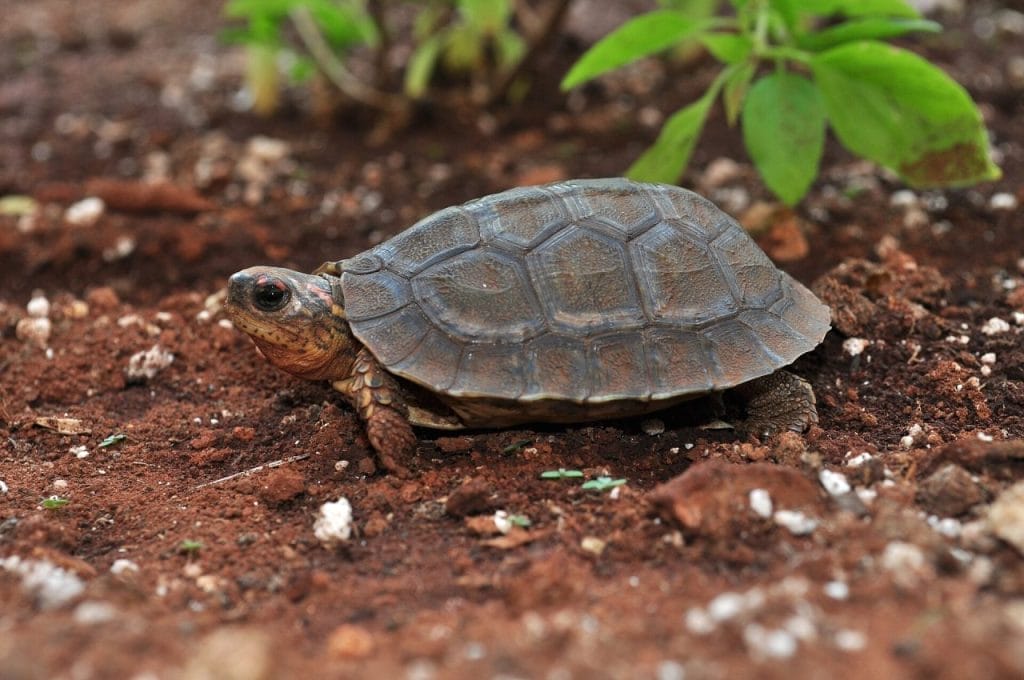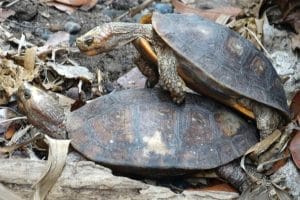Rhinoclemmys areolata (Furrowed wood turtle)
Home > Turtle Database > Rhinoclemmys areolata (Furrowed wood turtle)

Rhinoclemmys areolata, commonly known as the furrowed wood turtle, is a terrestrial and semi-aquatic species native to Central America. It is recognized for the distinctive furrows on its carapace and its adaptability to various habitats, including forests and wetlands. This species is known for its shy nature and ability to thrive in both dry and humid environments.
Native Turtle Species Map – Find Turtles by Region
Scientific Classification
Kingdom: Animalia
Phylum: Chordata
Class: Reptilia
Order: Testudines
Family: Geoemydidae
Genus: Rhinoclemmys
Species: Rhinoclemmys areolata
Common Names
Furrowed wood turtle
Central American wood turtle
This Hilarious Turtle Book Might Know Your Pet Better Than You Do
Let’s be real—most turtle care guides feel like reading a textbook written by a sleep-deprived zookeeper.
This one’s not that.
Told from the snarky point of view of a grumpy, judgmental turtle, 21 Turtle Truths You’ll Never Read in a Care Guide is packed with sarcasm, sass, and surprisingly useful insights.
And hey—you don’t have to commit to the whole thing just yet.
Grab 2 free truths from the ebook and get a taste of what your turtle really thinks about your setup, your food choices, and that weird plastic palm tree.
It’s funny, it’s honest, and if you’ve ever owned a turtle who glares at you like you’re the problem—you’ll feel seen.
Identification
Description
The furrowed wood turtle has a slightly domed, oval-shaped carapace with deep furrows or grooves along the scutes, giving it a rugged appearance. Its shell color ranges from brown to olive with dark markings. The plastron is yellowish with dark patches along the seams. The head is relatively small, with a pointed snout and light-colored stripes running along the sides.
Sexual Dimorphism
Males are generally smaller than females and have longer, thicker tails. They also have a concave plastron, which aids in mating, whereas females have a flat or slightly convex plastron.
Check more turtles from the Rhinoclemmys genus
Native Origin and Distribution
Geographical Range
This species is found in Central America, particularly in southern Mexico, Belize, Guatemala, and Honduras. It primarily inhabits lowland areas but can also be found at moderate elevations.
Preferred Habitat
The furrowed wood turtle prefers tropical forests, wetlands, and savannas, where it can access both land and shallow water sources. It thrives in humid environments with ample leaf litter, fallen logs, and shaded areas for shelter. It is often seen near streams, ponds, and seasonal pools, though it spends much of its time on land.
Behavior
Feeding Habits
This species is omnivorous, feeding on a mix of plant material, fruits, fungi, insects, and small vertebrates. It is opportunistic and adjusts its diet based on seasonal availability.
Predators
Predators include large birds, mammals such as raccoons, and reptiles like snakes. Hatchlings and juveniles are particularly vulnerable to predation.
Reproduction
Breeding Season
Breeding typically occurs during the wet season when humidity is high and resources are abundant.
Reproductive Method
Females lay small clutches of eggs in shallow nests, often choosing soft, damp soil to ensure proper incubation. Hatchlings emerge after several months, depending on temperature and environmental conditions.
Conservation
Extinction Status
Listed as Near Threatened by the IUCN, though some local populations face pressures.
Threats
Habitat destruction due to deforestation, agriculture, and urban expansion is a major threat. Collection for the pet trade also affects some populations.
Conservation Measures
Protected areas and national parks help conserve their natural habitat. Awareness programs and local conservation efforts aim to reduce illegal collection and habitat destruction.
Economic Importance
While not a major commercial species, the furrowed wood turtle is occasionally sold in the pet trade. It also plays an ecological role by controlling insect populations and dispersing seeds through its diet.
Interesting Facts
- Unlike fully aquatic turtles, this species spends much of its time on land and only enters water occasionally.
- It is known for its strong homing instinct, often returning to the same sheltering spots.
- The furrowed pattern on its shell helps with camouflage among forest debris.
- It is relatively shy and will retreat into leaf litter or under logs when disturbed.

About Author
Muntaseer Rahman started keeping pet turtles back in 2013. He also owns the largest Turtle & Tortoise Facebook community in Bangladesh. These days he is mostly active on Facebook.














